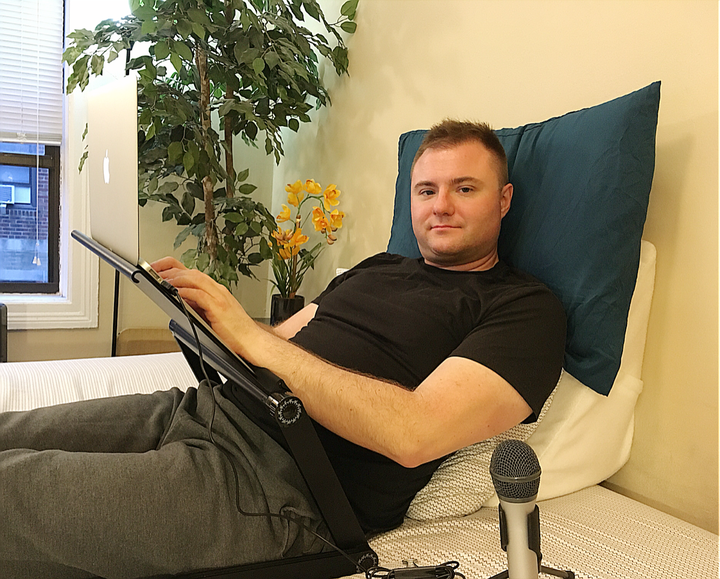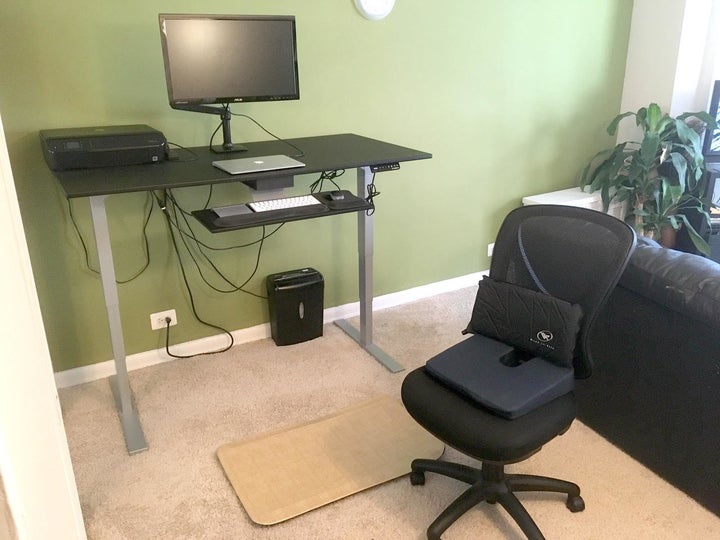
I am an opioid user.
There, I said it. I’m “out of the closet,” per se.
I have been fighting chronic back pain for the past 18 years and have been using opioids for the past eight. I am not addicted to the medication and do not take any more than my doctor prescribes.
I am always cognizant of the threat that I may one day become addicted, or worse, that my tolerance levels will rise and I will need more and more pills to receive the same amount of relief. I have to fight off addiction, but more importantly, I need to fight off pain.
The debate on the opioid crisis often overlooks chronic pain patients who take these medications responsibly. Many of us long for an affordable alternative to opioids, which have many adverse side effects.
I have a sitting disability, which means I cannot sit for long periods of time without severe pain, due to lumbago (low back pain) and sciatica (pain that shoots down my left leg). I also have fibromyalgia, which hits different areas of the body at different times. It is difficult for me to get around, sit for dinner, visit family and friends, or sometimes tie my shoes. I am the very definition of a chronic pain patient.
My doctor first prescribed me an opioid in 2010, after back surgery (lumbar fusion at the L5-S1 level). The decision for me to undergo surgery was not taken lightly by my doctor or myself. I spent 10 years attempting to fight the pain in other ways: chiropractors, physical therapists, acupuncture, acupressure, dry needling, yoga, meditation, massage, biofeedback, and steroid and collagen injections. The surgery was a last resort. So were the opioids. I had tried every other non-opioid pain medication on the market. The back surgery was a failure, and my doctor decided to keep me on them.
Opioids are not my only tool to fight pain. My preferred method is to lie on large ice packs and let the weight of my body sink into them. I also use heating pads, a transcutaneous electrical nerve stimulation unit, sprays, patches, and just avoiding sitting or standing for too long because it aggravates pain. Sprays and patches are smelly, TENS units are cumbersome, heating pads need electrical sockets, and ice packs require me to lie down, which is hard in public. Opioids are not a magic bullet, but they are portable when other forms are not reasonable.
At home, I can control my pain with fewer pain medications, but this leads to a cycle of isolation that many chronic pain patients experience. I am afraid to travel because it is difficult to sit in public places, so I tend to stay at home, sometimes days at a time. My doctors want me to live my life, even if it means taking the full dosage of pain medication. They are more worried about my isolation than my threat of addiction.

Patients like me live in fear of further crackdowns on opioid prescriptions. In October 2014, the Drug Enforcement Administration changed the medication I used, hydrocodone, to a Schedule II drug. At the time, I had been seeing my doctor once every two months for a checkup and a prescription that included another refill. After the change, hydrocodone could not legally be refilled without a brand-new paper script, so patients now needed an appointment each month.
I doubled the number of appointments with my pain specialist per year. It may seem like a small inconvenience for the patient, but this required pain specialists to schedule double or triple the number of appointments each month to take care of prescriptions for all of their patients.
Thus, slots with the doctor became a scarce resource, and the net result was that many chronic pain patients weren’t able to get their medications as all pain doctors were swamped during the transition. Other doctors were not willing to give opioids to a patient who was new to them, even if the patient had been on opioids from another doctor for years.
Many chronic pain patients have already gone the extra mile to fight the illnesses that inflict us with both Western and Eastern treatments. We have tried things that have not helped and have not tried things that are too expensive and not covered by health insurance. We do not mind peeing in a cup to help fight the opioid crisis that has afflicted others. Instead, we worry that new regulations will make more patients ineligible and we will not make the cut, despite using these medications for years. We fear repeal-and-don’t-replace fixes, where the government restricts opioids but alternatives are still not covered by insurance.
Opioid use is often lumped together with heroin use because opioids are synthetic versions of the poppy seed used to create heroin and can have similar effects. That is where the similarities end. One is prescribed by doctors for medical purposes, while the other is a street drug used recreationally. Heroin destroys lives. Opioids can also ruin lives if prescribed and used recklessly, but for most people, it can give them some of their life back. For instance, it allows me to get out of the house once in a while.
In the war on illegal drugs, it is essential to fight from both ends: 1. stop the drug dealers and 2. help those addicted.
Fighting the opioid crisis is similar: 1. place limits on opioid prescriptions (particularly for acute pain) and 2. help those addicted to opioids.
I applaud these efforts. However, because opioids are not designed to be recreational drugs, there is a third aspect to this war concerning chronic pain. We need to fight the medical cause as well. In short, we must be willing to pay for more advanced (and expensive) medical treatments.
“It is not acceptable to stop treating chronic pain. It is not acceptable to tell people to 'just live' with it. It is real and affects people’s lives in catastrophic ways.”
Anti-opioid advocates must be pro-something else. Often, they point to alternative medicines, like acupuncture, yet do not call for health insurance companies pay for these more expensive treatments. They talk about the benefits of medical cannabis in replacing opioids for pain management in some patients but don’t call for nationwide legalization, let alone requiring insurance companies to pay for it. Advanced pain management centers have had success in getting patients off opioids, but they are well beyond the financial reach of most people.
It is not acceptable to stop treating chronic pain. It is not acceptable to tell people to “just live” with it. It is real and affects people’s lives in catastrophic ways. Many who have experienced acute pain, such as from an accident or surgery, still don’t understand how chronic illness affects an individual. Chronic pain is not merely acute pain for an extended period of time. Long-term pain changes the patient’s lifestyle and isolates them. The knowledge that chronic pain will never get better prevents patients from living their lives to the fullest.
Opioids and other painkillers are not meant to cure diseases or fix structural problems. They are there to manage pain. For myself, I am not expecting a cure. My only goal is to control the pain from day to day. We cannot deny that our country is facing a dangerous opioid crisis, but we also have to recognize the positive effect opioids have on those that need them the most. We cannot ignore the pain that leads to opioid prescriptions in the first place. We must be willing to accept that the cost of solving the opioid crisis is a higher cost of health care. Is that a pill we are willing to swallow?
When friends and family talk to me about my sitting disability, I often hear sentences that start with, “Have you tried...” and the sentence ends with something I had either tried and didn’t work, or would like to try but it is not covered by my insurance. When looking for new treatments to manage my pain, I no longer think in terms of tradition versus alternative medicine, or Eastern versus Western approaches. My concern is: Will my insurance company pay for this, or won’t it? I read all sorts of stories about groundbreaking treatments, but none of them are covered by insurance or within my grasp.
I would love to stop taking opioids. Trust me; I would. The side effects are almost as severe as the pain. But I have not found a suitable alternative. My sitting disability makes sitting painful. Therefore, I tend to stay home when I can, avoiding social interactions and daily activity most people take for granted.
Taking my pain medication can help me to sit through a dinner or a movie. It can help me spend six hours out of the house, rather than only four. The medication won’t remove the pain altogether, but it might reduce it from a pain level 7 to a pain level 3. It’s the best I can do without adequate pain management.
Opioids can be dangerous for some, but for me, they have helped me merely to live my life.
Do you have a personal story you’d like to see published on HuffPost? Find out what we’re looking for here and send us a pitch!
